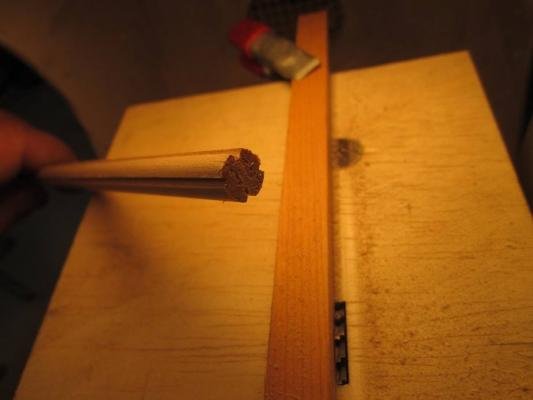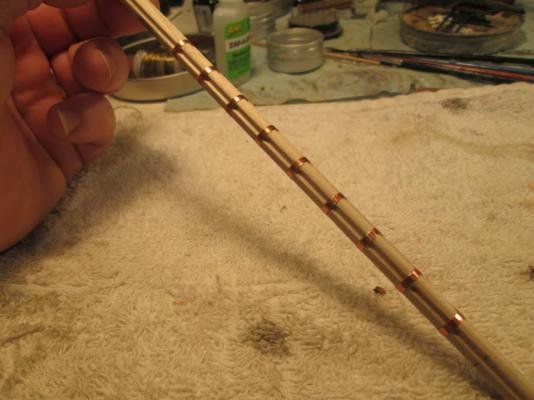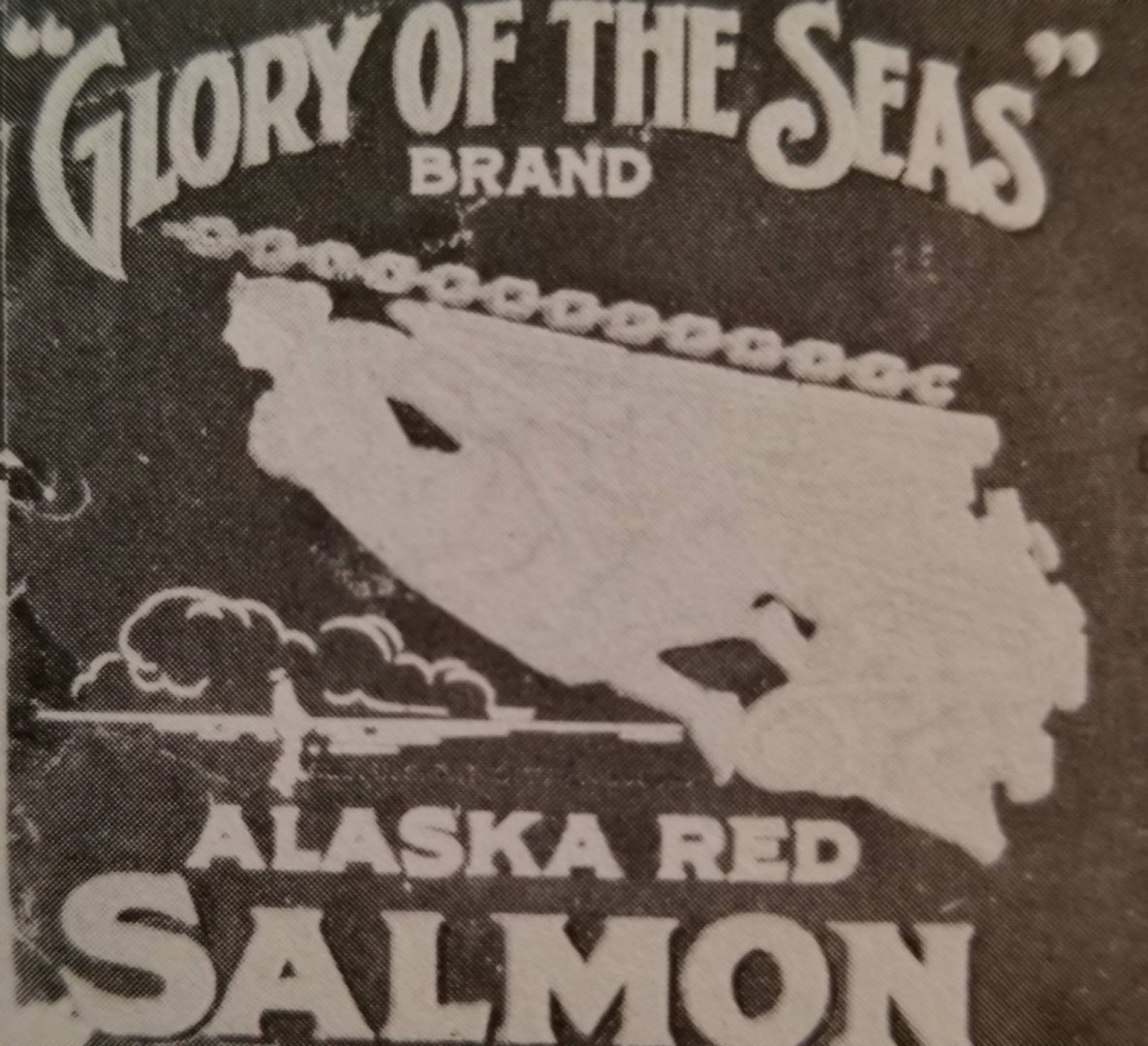-
Posts
5,504 -
Joined
-
Last visited
Content Type
Profiles
Forums
Gallery
Events
Everything posted by rwiederrich
-
Vlad...I'm just so happy I could be of any influence...when it comes to clippers. Since the clipper is an American invention...an invention of necessity....I am compelled by their robust, wood construction and grace in simplicity. Even though the Clipper Era was short...there were and are, a vast amount of vessels to entice the prudent modeler. I am so glad you are beginning to focus on the Flying Fish. She was one of McKay's smaller models..but she had a wonderful history. A good set of plans is a good start....and 1/48 is a fairly large scale to work in...so details can be more accurately replicated. Good luck and I'm glad I can be of any help. Rob
-
Yes..can you imagine Donald McKay's reaction when he first heard that his largest most expensive vessel burned to the water...before she could even prove herself in her design and her ability. To answer your question, *Am I going to build every clipper Donald McKay built....well the answer to that is no. He built 38 clippers...from extreme models to medium designs. With that said....I am mostly interested in the models that made significant contributions and or had historical implications. Not simply recognizing the ones that have available plans and working descriptions. I first built the Glory of the Seas, because she was Donald's last clipper, with an epic beginning...not to mention life and end. The Donald McKay...she was Donald's second largest clipper and the last *extreme* clipper McKay built. Similar to the clipper Lightning, she had a (single) open railed gangway that led from the poop deck forward to the main cabin...permitting sailors to traverse forward and aft without having to descend down to the main deck and back up to the forecastle. An ingenious design that the latter *Windjammers* and DownEasters would employ. Then there is the Great Republic...being nearly twice as large as the average clipper and coming in at a whopping 4555 tons. She was, IMV a *natural*. Her concept to her demise is a thrilling story in of itself. an amazing ship and tale. I have one other Ship of significant design, that is on my list to build from the McKay catalog and that is the Sovereign of the Seas. She was large, 2421 tons...but she is famous for being the Fastest clipper ship ever made. Not only in knots per hour, but in miles logged per day. The Flying Cloud is on record for having the fastest passages from NY to SanFran, however, the Sovereign, holds the fastest speeds and miles per day records. I entertained building all of Donald McKay's clippers that shared the same theme in their names....too, like, Sovereign of the Seas ,Empress of the Seas, Romance of the Seas, Champion of the Seas and Glory of the Seas. However, more important contributions superseded vessel names. Hope this helps. Rob
-
As you might already know..the clipper ship design is uniquely an American design, born out of necessity. Speed was far more a premium then cargo capacity Donald McKay was able to blend the design characteristics of several other builders, along with his own ideas and he capitalized. Never creating the same clipper model twice, apart from a couple sister ships. American Clippers were mainly constructed out of old growth timber....a commodity not available in the UK. During the height of the clipper rage (about 1852) some ships were actually built in as little as 3 months. Amazing, when you think that it generally takes years to complete a large sea going vessel. There are several volumes of books dedicated to Donald McKay and his clippers. Rob
-
A little info from the past. I wanted to show how I made the composite masts for the Glory of the Sea. They were constructed in similar fashion as those for my Donald McKay build. I first had to build a table saw for one of my Baldor lathes, that I could use to cut within the dowel and along its shaft a small groove. 4 to be exact, evenly placed around the dowel. This would simulate the external outer portions of the constructed mast. Then I added the fillets to fill in the space so the mast bands would follow symmetrically around the curve of the mast. Here are a couple of images of the milling and the banding of the composite masts. Rob
-
It was to be a *Hint* of open ocean.... since the model footprint is also a critical aspect of the build. The inclination and attitude of the vessel within the sea was part of the goal...not so much the scale of the ship to the enormous ocean it was tossed around upon. Thanks Druxey for the observation and fine comment. Rob
-
Thanks JREwing. I began the Donald McKay, just about the time I started the Glory of the Seas. I wanted to develop my water making skills and depict a vessel out in the raging open sea...climbing out of the trough of a huge wave. I admit, after accomplishing that...I put the McKay on hold to work on the Glory of the Seas(and a couple of other ideas). Hopefully, I will return to her when I finish the Glory....she deserves to be completed. I've developed some additional skills since then and I want to make some changes to her deck house and elevated walk way. Time aids one in fully realizing ones potential and desire. Thanks for pulling this build thread up and for your fine comments. Rob
-
Yes Vladimir...Michael Mjelde wrote two books on the Glory, and he even lives near me. Before all this COVID nonsense came around we were planning a meeting. I hope to be back in touch with him soon. Yes...Glory is a very sad story and probably one of Donald McKay's best vessels...but like you said...he never recovered from investing everything he had left into her. He was hoping on earlier days of Glory and honor...but the days of clippers had come and gone....right out underneath him. I can't tell you proud I am to actually own part of her...... Thanks for looking in and for the fine comments. Rob
-
I only was working the starboard side...so much to keep untagled. While I was working I opted to spend some time machining a mini chuck for the right angle slow speed handpiece. It locks into the collet and makes for a secure drill. It makes getting into those real hard places a breeze now. I can now use any of my mini drill, with no problem change out.
-
Worked on the topgallant yard. Even though I am not finished with the topsail yard rigging...I need the topgallant yard in place so I can run the sheets down to the topsail yard and through some sheaves and blocks to finish out that yard. So I'll mount some eye bolts to the yards next...paint it and then bend the furled sail to it. Rob
-
Exceptional work Siggi. you have mastered nearly every aspect of the construction of the cannon...very impressive for sure. A credit to your craftsmanship and execution. What a pleasure to watch. Rob
-
Yes...Hi Bruce. I remember you and your Lightning build very well. I was just watching your YouTube video of her yesterday....Probably one of the best models I have seen. And I do see you are starting the Red Jacket as well. I hope you will be starting a build log for her. Did you get a look at my finished Great Republic? After nearly 5 years I'm finally finished with her as well. Good to hear from you Bruce. Rob
-
Still have loads to do for sail control and lifts and downhauls and addition of the buntline blocks..... I'm going to finish up the main mast before going to the mizzen and then the fore. Not like I built the Great Republic. I developed the technique of rigging the entire mast, with sails on the Great Republic. this ship was started waaaaay long before...so its rigging will be hodge podged. Thanks everyone for all the fine likes and wonderful comments. Rob
About us
Modelshipworld - Advancing Ship Modeling through Research
SSL Secured
Your security is important for us so this Website is SSL-Secured
NRG Mailing Address
Nautical Research Guild
237 South Lincoln Street
Westmont IL, 60559-1917
Model Ship World ® and the MSW logo are Registered Trademarks, and belong to the Nautical Research Guild (United States Patent and Trademark Office: No. 6,929,264 & No. 6,929,274, registered Dec. 20, 2022)
Helpful Links
About the NRG
If you enjoy building ship models that are historically accurate as well as beautiful, then The Nautical Research Guild (NRG) is just right for you.
The Guild is a non-profit educational organization whose mission is to “Advance Ship Modeling Through Research”. We provide support to our members in their efforts to raise the quality of their model ships.
The Nautical Research Guild has published our world-renowned quarterly magazine, The Nautical Research Journal, since 1955. The pages of the Journal are full of articles by accomplished ship modelers who show you how they create those exquisite details on their models, and by maritime historians who show you the correct details to build. The Journal is available in both print and digital editions. Go to the NRG web site (www.thenrg.org) to download a complimentary digital copy of the Journal. The NRG also publishes plan sets, books and compilations of back issues of the Journal and the former Ships in Scale and Model Ship Builder magazines.






